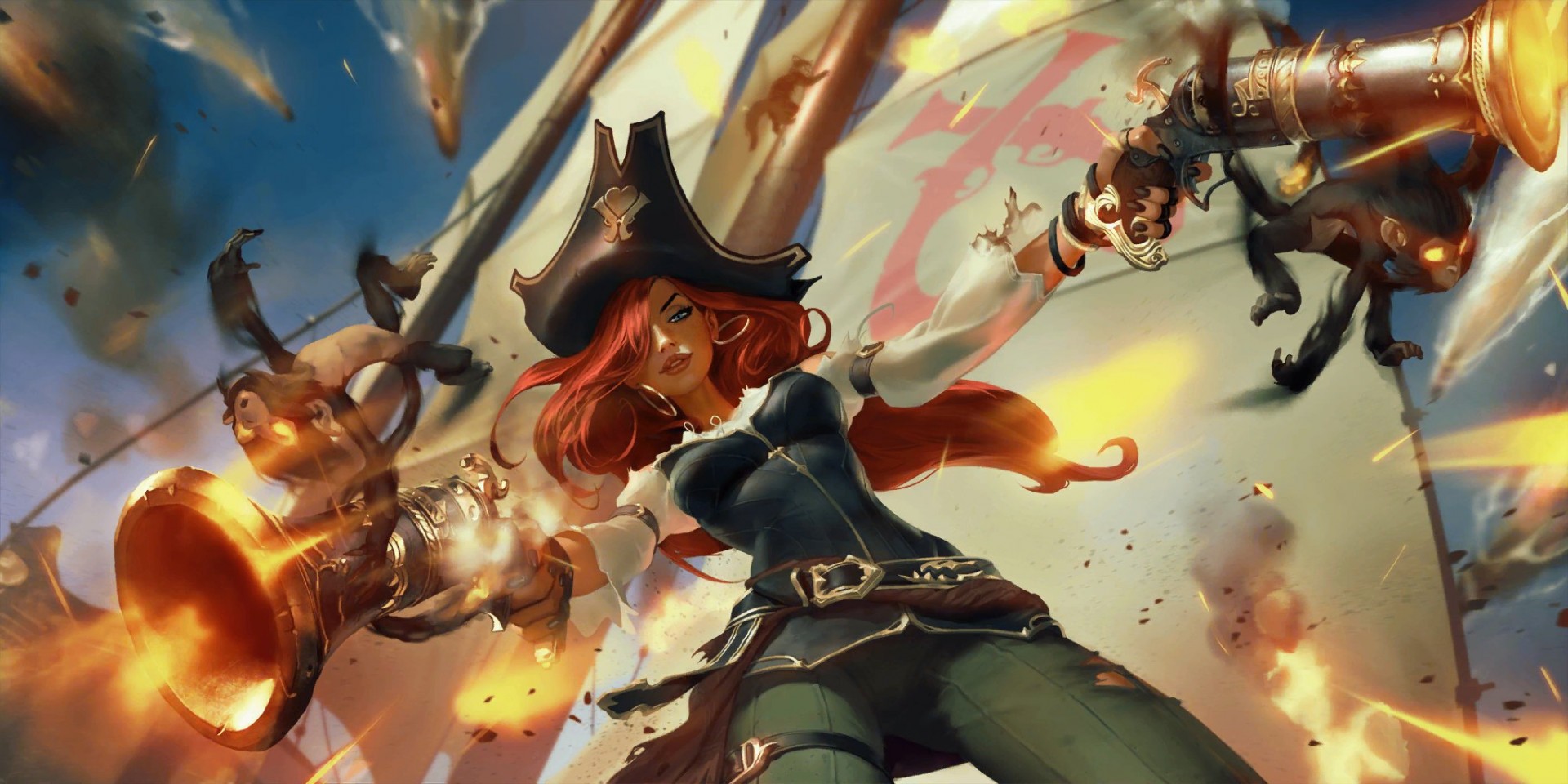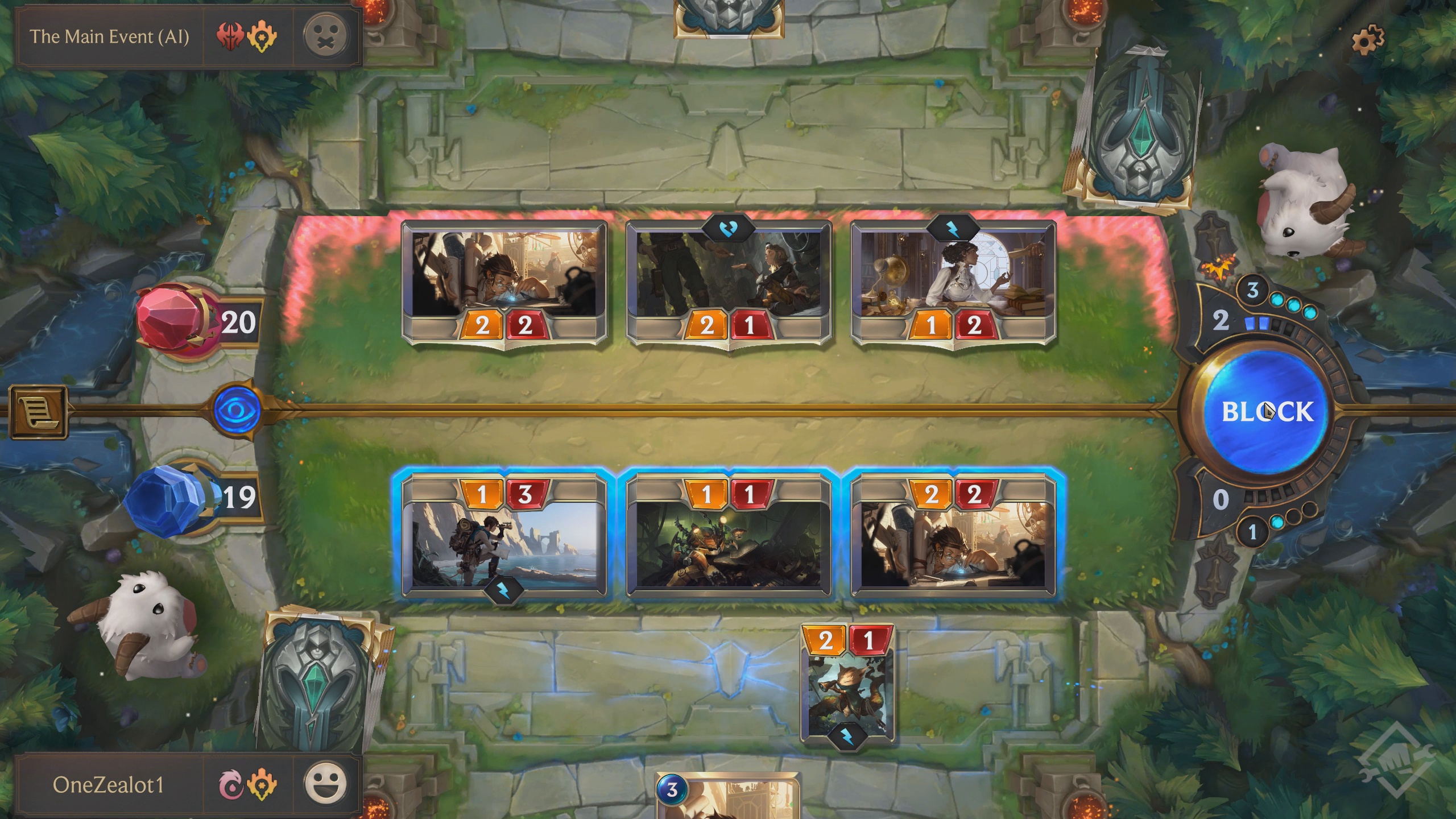Legends of Runeterra has quietly become the best multiplayer card game
With a new roguelike singleplayer mode, multiple expansions, and a big calendar of events, Legends of Runeterra has blossomed into something awesome.

League of Legends spin-off Legends of Runeterra was already a great card game when I first reviewed it last year. It borrows enough from Magic: The Gathering to be familiar, while also innovating with fantastic ideas like mana that can be banked for later turns and powerful Champion cards with unique abilities that also level up as a reward for playing to a specific strategy. But, hoo boy, has it changed a lot in the year since—and all for the better. It's gotten fantastic new game modes, hundreds of new cards with unique abilities, and a progression system that still is ridiculously generous. I just want to shout it from the rooftops: Legends of Runeterra is the best multiplayer card game. Flat out.
Pick a card
It's weird to play a card game this generous.
I'm not just trying to rustle the feathers of those who enjoy other card games like Hearthstone. Blizzard's landmark CCG—whose popularity undoubtedly inspired Riot to make Runeterra in the first place—is also in a fantastic place thanks to huge overhauls in its core formats and rewards systems. And now that the grandaddy of all card games, Magic: The Gathering, has a proper digital version, the genre has never been stronger. But, man, the idea of cracking another booster pack and getting mostly junk cards that are immediately turned into a pittance of Dust is such a turn off for me. The biggest problem with Hearthstone and Magic: The Gathering is and always has been how damn expensive they are.
In Runeterra, I don't have to pay a dime to get the cards I want at a reasonable pace. Everything is centered around the Vault, which opens once a week and gives you rewards based on how much experience you earned by completing quests and winning. Some of those rewards are a generous helping of random cards and crafting currency, but I also earn Wildcards, special tokens that I can redeem to buy any card of the equivalent rarity. It's also ridiculously easy to level up the Vault enough to guarantee at least one of the rarest Champion cards each week. It only takes a few days worth of quests. So even if I don't get the cards I want, I can just buy them with Wildcards almost immediately.
The wildcard system is such a game changer. I don't have to sell my cards for a pittance of in-game currency so I can craft ones I actually want or pray that I get lucky enough to draw that ultra-rare one that makes a certain deck viable. I just have to play each day to level up my Vault and max out the rewards from Runeterra's different game modes and I can have a new deck every week or two. No blood sacrifices to the Gods of RNG required. It's weird to play a card game this generous. Sure, I can still buy cards using real money if I'm impatient, but most of what Runeterra sells are optional cosmetics like special card backs or boards (and the occasional battle pass).
This system has been one of Runeterra's defining traits from the beginning, but Riot has added a whole lot of new stuff too. Coming back after a break, I was shocked at how lively the game feels. The in-game calendar is stuffed with upcoming events and festivals that have their own cosmetic rewards (in addition to more cards and experience points to level up the Vault). There's tournament brackets to compete in (if you're skilled enough), battle passes to complete, and an ever-rotating selection of experimental modes called Labs that have become Runeterra's greatest strength for me.
A recent Labs mode turns Legends of Runeterra into a four-player card game where you compete in teams of two. It's as hectic and wild as it sounds. My favorite, however, is the Lab of Legends. It's a singleplayer roguelike mode where you push through a gauntlet of matches against the computer with a basic starter deck. Each deck you fight against has its own unique ability and strategy, but achieving victory grants you randomized augments for your own cards and powerful abilities.
I'm a bit gobsmacked at how much Runeterra has changed and expanded.
This is where I've been spending most of my time for the past few weeks. Like any good roguelike, Lab of Legends encourages you to think outside the box and come up with wacky decks that'll absolutely devastate the computer opponents. Couple those cards with some random augments like ones that give your units powerful keywords like Quick Attack, Regeneration, or, hell, a power that increases the health of any of my attacking minions to match their attack power, and it's easy to make some wickedly fun and unpredictable decks.
Keep up to date with the most important stories and the best deals, as picked by the PC Gamer team.
Lab of Legends was only rolled out in February, but already Riot has expanded it to include a new ultra-challenging difficulty mode and two new starter deck archetypes to play with. More will presumably come sometime after the new set arrives on May 5, which is good news because Lab of Legends has so much potential it feels like it could be its own game.
The new expansions have all been excellent, too. Most recently, the Empires of the Ascended set added 110 cards, nine of which were brand new champions like Azir and Renekton. As a League of Legends player, seeing more heroes transition over to Runeterra is always fun, and I'm continually impressed at what a remarkable job Runeterra does for translating their playstyle from LoL into a card game. Azir, for example, summons walls of sand soldiers in League of Legends. In Runeterra, every time he attacks he summons sand soldiers that attack alongside him. When you summon enough units, he'll level up and start buffing the attack and health of any summoned units.
But Runeterra isn't just content with tossing out some new playstyles or the occasional new ability. It routinely invents entirely new systems and card types. Empires of the Ascended also introduces Landmarks, which are basically like the card equivalent of buildings. Most Landmarks have a countdown timer that ticks down after each round, triggering a special effect at zero. Play the Buried Sun Disc, for example, and it'll count down from 25 rounds before transforming into the Restored Sun Disc. When that happens, it's game over: Champions like Azir and Renekton will automatically level up to level three (which no other cards can do) and become ridiculously powerful.
Last year, Runeterra added a whole set of cards that have different abilities whether they're played first or second each round. And already there's a new set due to arrive in May that'll undoubtedly introduce its own fun wrinkles (and Champions).
It's only been a year, but I'm a bit gobsmacked at how much Runeterra has changed and expanded. And it's made all the sweeter by the fact that I can quickly catch up as a free-to-play player without really feeling pushed to spend money or grind relentlessly. There's just so much to do week to week—and so many ways to increase my card collection—that it's hard not to gush about Legends of Runeterra.
With over 7 years of experience with in-depth feature reporting, Steven's mission is to chronicle the fascinating ways that games intersect our lives. Whether it's colossal in-game wars in an MMO, or long-haul truckers who turn to games to protect them from the loneliness of the open road, Steven tries to unearth PC gaming's greatest untold stories. His love of PC gaming started extremely early. Without money to spend, he spent an entire day watching the progress bar on a 25mb download of the Heroes of Might and Magic 2 demo that he then played for at least a hundred hours. It was a good demo.





